
Nafplio: Greece's Timeless Coastal Gem
Explore Nafplio, a charming coastal town in Greece known for its rich history, stunning architecture, and beautiful beaches. Discover its timeless allure and scenic beauty.
Nafplio is a picturesque coastal town that captures the essence of Greece's rich history and natural beauty. Nestled in the Peloponnese region, this charming city offers a delightful blend of ancient ruins, medieval castles, and serene beaches. The old town is a maze of narrow streets, adorned with neoclassical mansions, vibrant bougainvillea, and quaint cafes that invite you to take a leisurely stroll and soak in the atmosphere. A visit to Nafplio is incomplete without exploring its historical landmarks. The imposing Palamidi Fortress, perched high on a hill, offers breathtaking views of the Argolic Gulf and the city below. The climb to the fortress is a bit challenging but rewarding. Another must-see is the Bourtzi Castle, a small island fortress that has served various purposes throughout history, from a prison to a hotel. Accessible by boat, it adds a touch of adventure to your sightseeing. Beyond its historical allure, Nafplio also boasts stunning natural scenery. The Arvanitia Promenade is perfect for a scenic walk along the coastline, offering spectacular views of the sea and the surrounding landscape. For those seeking relaxation, the sandy beaches of Karathona and Tolo are just a short drive away, providing the perfect setting for swimming and sunbathing. Whether you're a history buff, a nature lover, or simply looking to unwind, Nafplio has something special to offer.
Local tips in Nafplio
- Wear comfortable shoes for walking around the old town and climbing to the Palamidi Fortress.
- Visit the local markets for fresh produce and unique souvenirs.
- Try the local cuisine at traditional tavernas, especially seafood dishes.
- Take a boat trip to Bourtzi Castle for a unique perspective of the city.
- Visit Nafplio in the spring or fall to avoid the summer crowds and enjoy pleasant weather.
- Explore nearby archaeological sites like Mycenae and Epidaurus for a deeper historical experience.
Nafplio: Greece's Timeless Coastal Gem
Nafplio is a picturesque coastal town that captures the essence of Greece's rich history and natural beauty. Nestled in the Peloponnese region, this charming city offers a delightful blend of ancient ruins, medieval castles, and serene beaches. The old town is a maze of narrow streets, adorned with neoclassical mansions, vibrant bougainvillea, and quaint cafes that invite you to take a leisurely stroll and soak in the atmosphere. A visit to Nafplio is incomplete without exploring its historical landmarks. The imposing Palamidi Fortress, perched high on a hill, offers breathtaking views of the Argolic Gulf and the city below. The climb to the fortress is a bit challenging but rewarding. Another must-see is the Bourtzi Castle, a small island fortress that has served various purposes throughout history, from a prison to a hotel. Accessible by boat, it adds a touch of adventure to your sightseeing. Beyond its historical allure, Nafplio also boasts stunning natural scenery. The Arvanitia Promenade is perfect for a scenic walk along the coastline, offering spectacular views of the sea and the surrounding landscape. For those seeking relaxation, the sandy beaches of Karathona and Tolo are just a short drive away, providing the perfect setting for swimming and sunbathing. Whether you're a history buff, a nature lover, or simply looking to unwind, Nafplio has something special to offer.
When is the best time to go to Nafplio?
Iconic landmarks you can’t miss
Fortress of Palamidi
Explore the Fortress of Palamidi, a historical gem offering stunning views and a glimpse into Greece's rich heritage, set high above Nafplio.
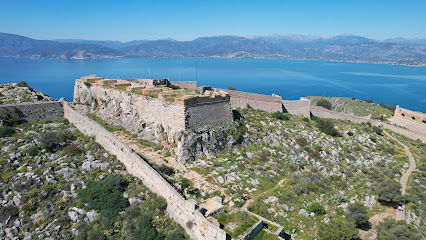
Syntagma Square - Nafplio
Experience the vibrant atmosphere and historical significance of Syntagma Square in Nafplio, Greece, a cultural hub for tourists and locals alike.
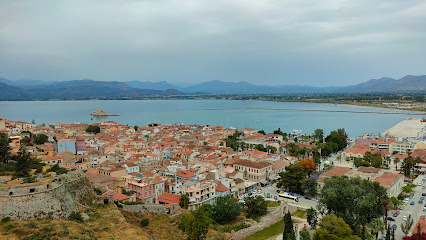
Archaeological Museum of Nafplio
Delve into Greece's rich history at the Archaeological Museum of Nafplio, showcasing artifacts from ancient civilizations.
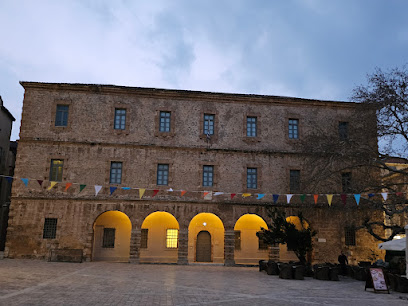
Fortress of Akronauplía
Explore the historic Fortress of Akronauplía in Nafplio, Greece, and enjoy breathtaking views and rich cultural heritage amidst ancient walls.
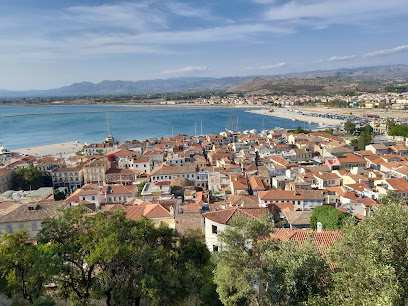
Church of Saint Spyridon
Discover the rich heritage of Nafplion at the Church of Saint Spyridon, an iconic Greek Orthodox church filled with captivating history and stunning architecture.
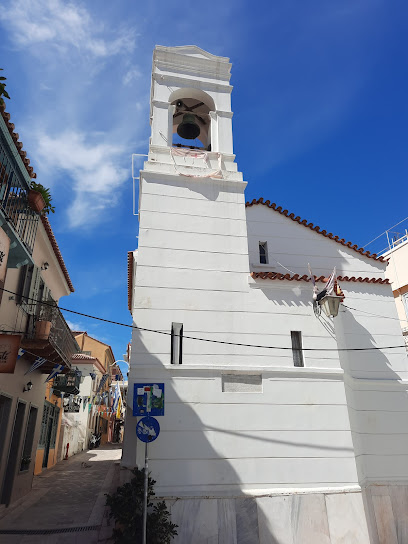
Lion of the Bavarians
Discover the Lion of the Bavarians in Nafplio, a stunning sculpture that embodies Greece's rich history and artistic heritage.
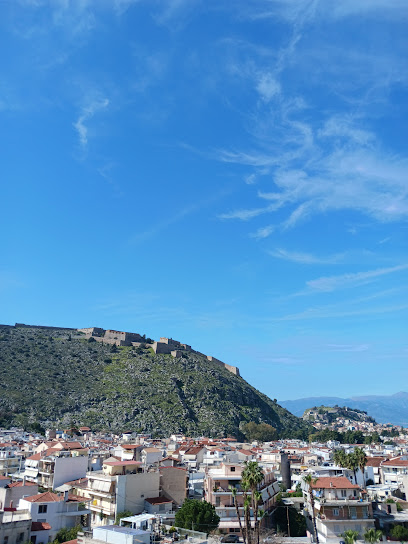
The Bourtzi Fortress
Discover the breathtaking Bourtzi Fortress in Nafplio, a historic gem with stunning views and rich cultural significance in Greece.
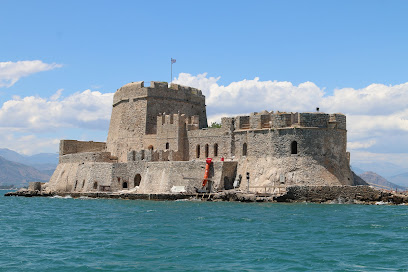
Five Brothers
Discover the historical essence of Five Brothers in Nafplio, a captivating landmark that narrates the rich culture and heritage of Greece.
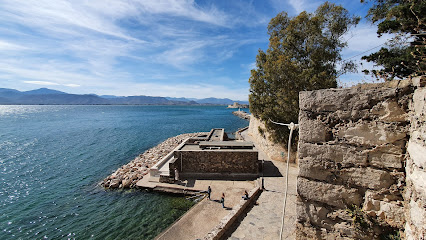
National Gallery - Nafplio Department
Explore the National Gallery in Nafplio, a cultural gem showcasing the evolution of Greek art through stunning exhibitions in a beautiful setting.
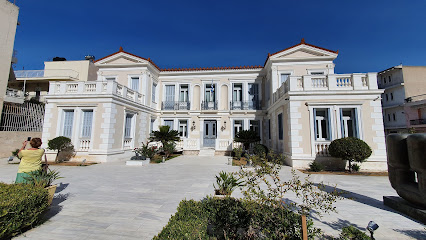
Kolokotronis Park
Explore the tranquility and historical charm of Kolokotronis Park, a serene escape in the heart of Nafplio, Greece.
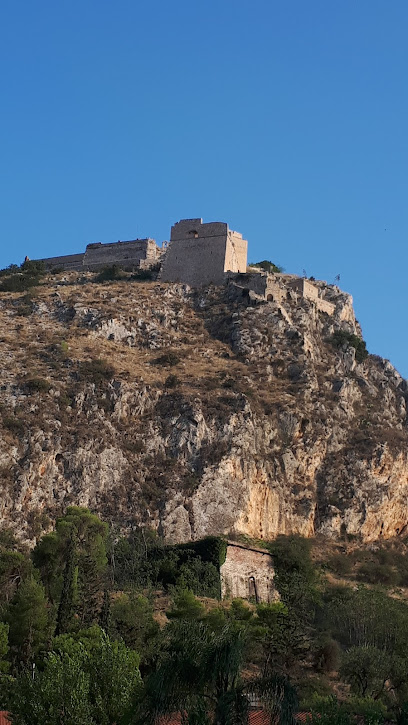
Nafplio Lighthouse
Explore the stunning Nafplio Lighthouse, a historic beacon offering breathtaking views and a serene atmosphere in the heart of Nafplio, Greece.
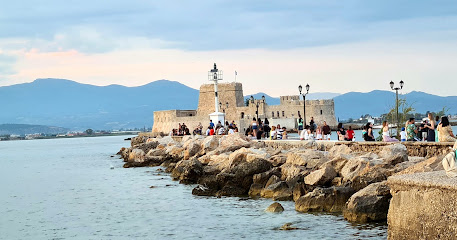
Komboloi Museum
Explore the unique cultural heritage of Greece at the Komboloi Museum in Nafplio, showcasing exquisite worry beads and their captivating history.
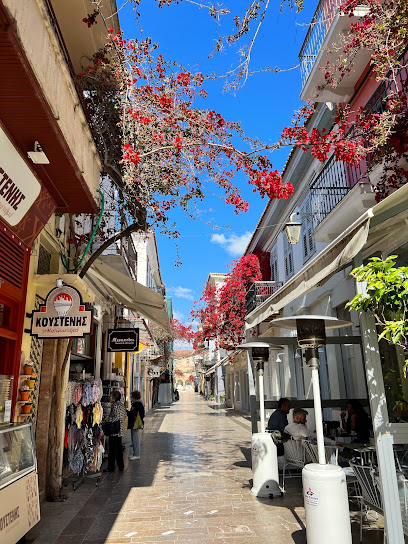
Vouleftiko - First Parliament of Greece
Explore Vouleftiko, the First Parliament of Greece, and immerse yourself in the rich history of the nation's journey to democracy.
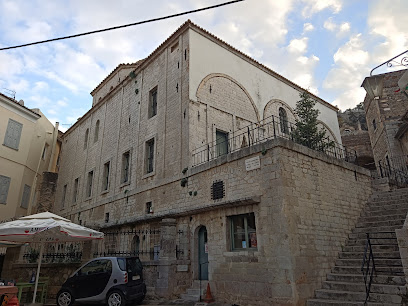
Archaeological Site of Asine
Explore the Archaeological Site of Asine, a stunning historical landmark rich in ancient Greek culture and breathtaking coastal views.
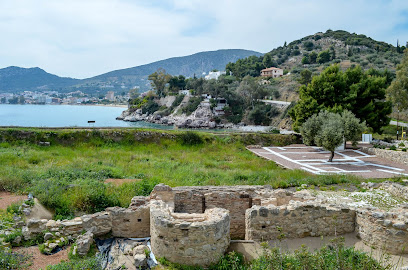
Akronafplia's Castle
Discover the rich history and breathtaking vistas at Akronafplia's Castle in Nafplio, a captivating medieval fortress overlooking the Argolic Gulf.
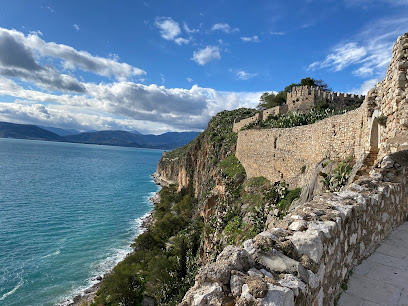
Unmissable attractions to see
Ancient Theatre at the Asklepieion of Epidaurus
Explore the Ancient Theatre at the Asklepieion of Epidaurus, a historic marvel with exceptional acoustics and breathtaking views of ancient Greece.
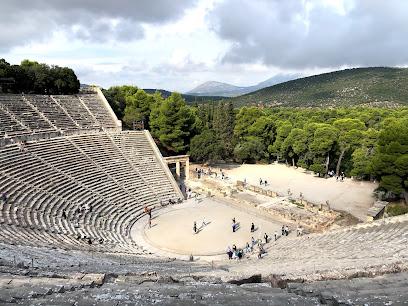
Archaeological site of Mycenae
Explore Mycenae, an ancient archaeological site in Greece that reveals the grandeur of the Mycenaean civilization and its iconic landmarks.
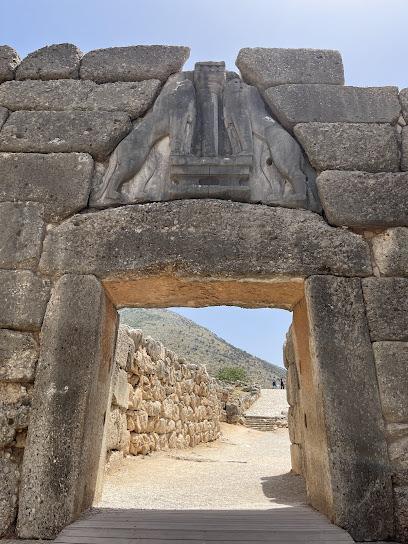
Fortress of Palamidi
Explore the Fortress of Palamidi in Nafplio, a stunning historical site with panoramic views and rich architectural heritage.
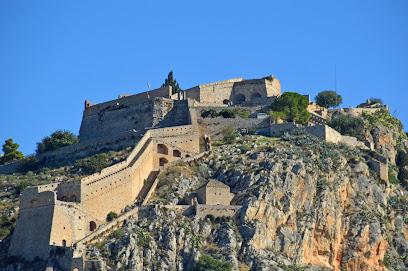
Corinth Canal
Explore the breathtaking Corinth Canal, a stunning feat of engineering that links the Aegean and Ionian Seas, offering picturesque views and rich history.
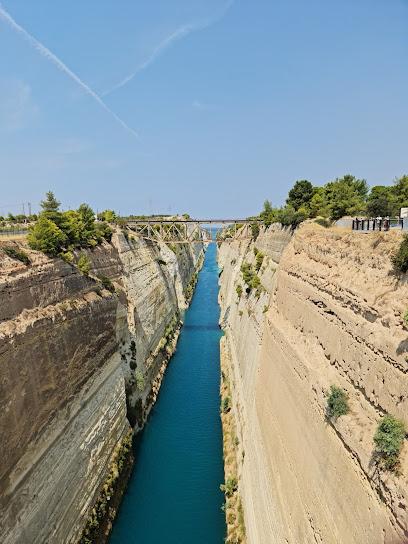
Archaeological Site of the Sanctuary of Asclepius at Epidaurus
Explore the Sanctuary of Asclepius at Epidaurus: A historical landmark steeped in ancient healing traditions and breathtaking architecture.
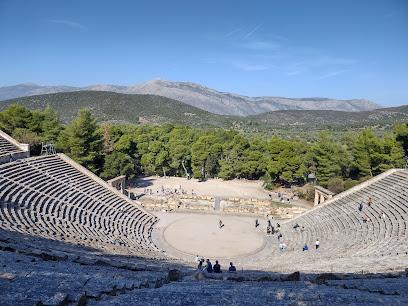
Acrocorinth
Discover the ancient fortress of Acrocorinth, a breathtaking historic site that offers stunning vistas and a deep dive into Greece's rich history.
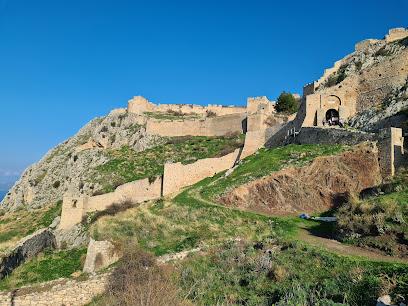
Treasury of Atreus or Tomb of Agamemnon
Explore the monumental Treasury of Atreus, a stunning historical landmark in Mycenae that embodies the grandeur of ancient Greece.

Temple of Apollo
Uncover the rich history of Greece at the Temple of Apollo in Archaia Korinthos, a stunning architectural marvel and archaeological treasure.
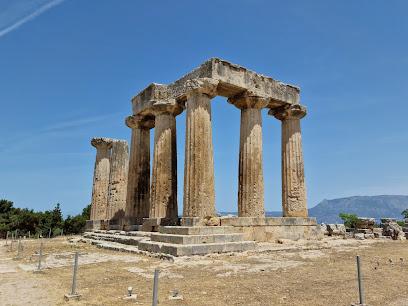
Archaeological Museum of Ancient Corinth
Discover the wonders of Ancient Greece at the Archaeological Museum of Ancient Corinth, home to exquisite artifacts and rich historical narratives.
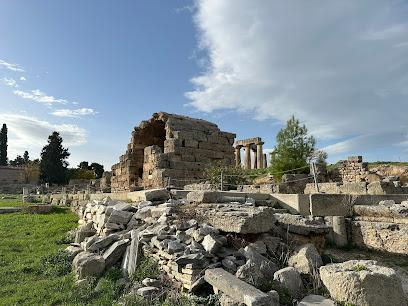
Kapsia Cave
Explore the enchanting Kapsia Cave, a breathtaking natural wonder in Mantinia, filled with stunning geological formations and rich history.
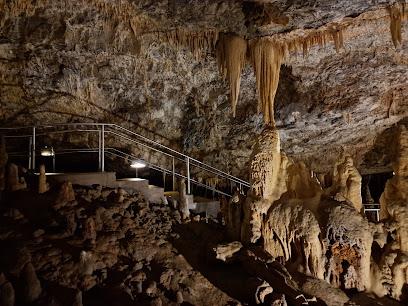
Monastery Elonas
Experience tranquility and stunning architecture at Monastery Elonas in Kosmas, a serene retreat surrounded by breathtaking mountain views.
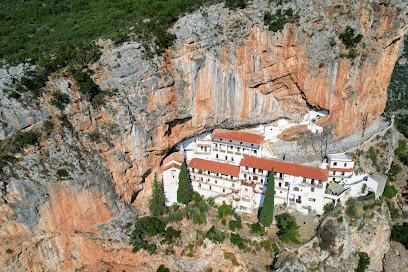
Mycenean Acropolis of Tiryns
Explore the Mycenean Acropolis of Tiryns, a UNESCO World Heritage site, showcasing ancient ruins and the remarkable history of Greece's Mycenaean civilization.
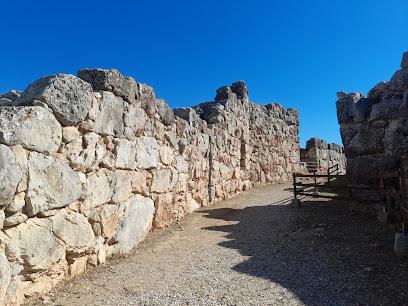
Environment Museum of Stymphalia
Explore the Environment Museum of Stymphalia, where nature's beauty meets cultural heritage in a captivating setting.
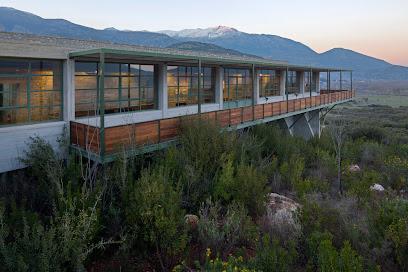
Mycenean Acropolis of Tiryns
Explore the Mycenean Acropolis of Tiryns, an ancient marvel showcasing stunning ruins and rich history in the heart of Peloponnese, Greece.
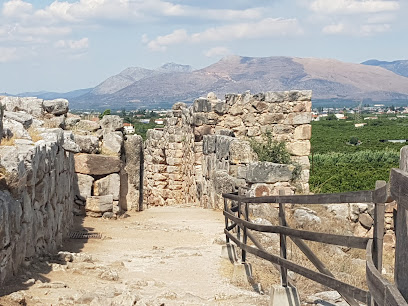
Paralia Arvanitias
Discover the beauty of Paralia Arvanitias in Nafplion, Greece - a stunning beach perfect for relaxation, swimming, and breathtaking sunset views.
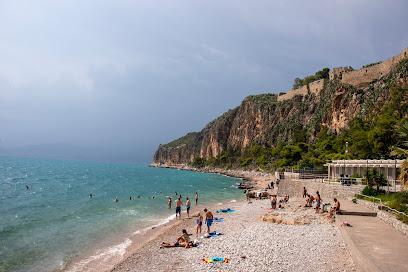
Essential places to dine
Pidalio Tavern
Discover Pidalio Tavern in Nafplio: A Delightful Journey Through Authentic Greek Flavors in a Warm Atmosphere.
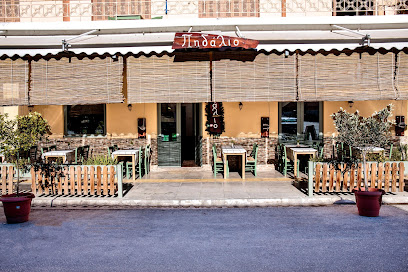
To Omorfo Tavernaki
Experience the authentic flavors of Greece at To Omorfo Tavernaki in Nafplio – where tradition meets taste in every dish.
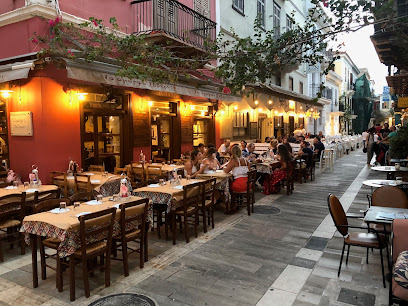
Scuola Pizza
Experience authentic Italian cuisine at Scuola Pizza in Nafplio – where every meal feels like a vacation.
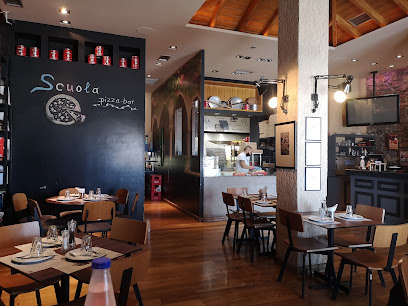
Stable Thrakotaverna Nafplio
Experience the heart of Greek cuisine at Stable Thrakotaverna Nafplio - where tradition meets flavor in every bite.
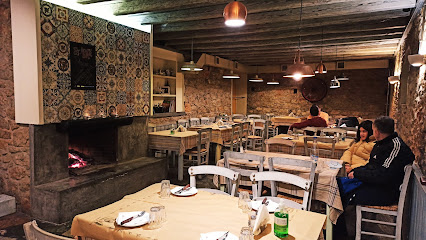
Aiolos Tavern - Αίολος ταβέρνα
Experience authentic Greek cuisine at Aiolos Tavern in Nafplio – where tradition meets taste in every dish.

Il Porto
Experience authentic Italian flavors at Il Porto in Nafplio – where every dish tells a story of tradition and passion.
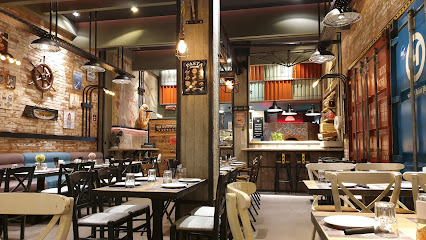
3SIXTY Grill Dining | Wine Bar
Experience exquisite flavors at Nafplio's top dining destination - 3SIXTY Grill Dining & Wine Bar offers fine dining and an exceptional wine selection.
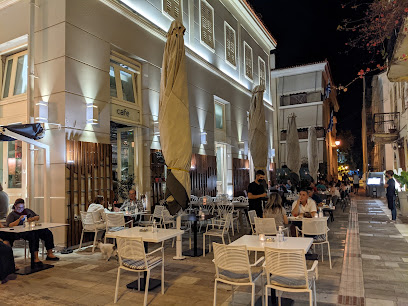
To Teloneio
Experience authentic Greek flavors at To Teloneio in Nafplio - where small plates meet big taste in a cozy atmosphere.
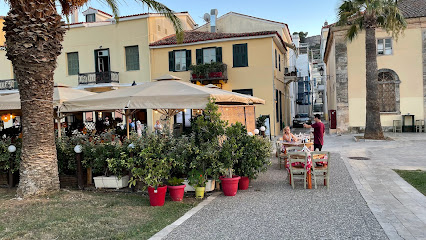
Kakanarakis 1986
Experience authentic Greek cuisine at Kakanarakis 1986 in Nafplio, where tradition meets modern dining in a picturesque setting.
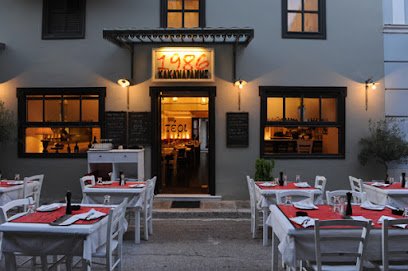
Teory
Experience delicious breakfast delights at Teory Bistro in Nafplio, where local flavors meet cozy ambiance.

Rendez vous
Discover Rendez Vous in Nafplio: A delightful bistro offering exquisite breakfasts and coffee experiences amid charming surroundings.
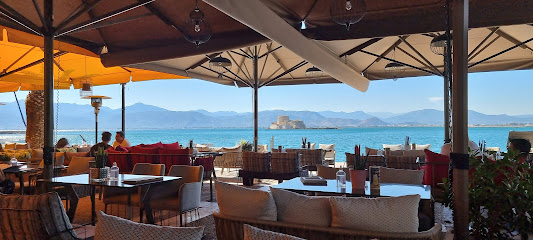
The Corner of Kavalaris
Discover authentic Greek flavors at The Corner of Kavalaris in Nafplio, where small plates meet Mediterranean charm.
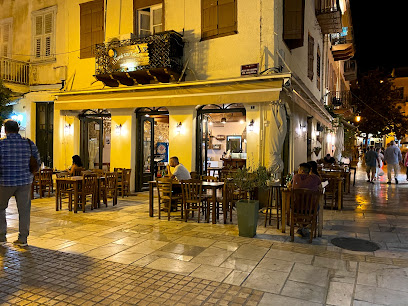
ΜΙΤΑΤΟ Grill Restaurant
Experience authentic Greek grilled specialties at ΜΙΤΑΤΟ Grill Restaurant in Nafplio – where flavor meets tradition in every bite.
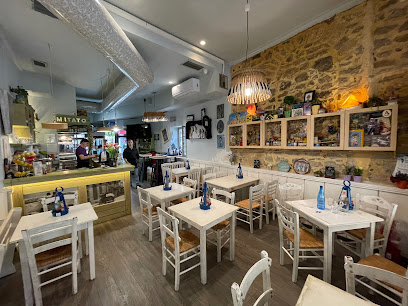
La Gratella
Experience authentic Italian cuisine at La Gratella in Nafplio - where every dish tells a story.
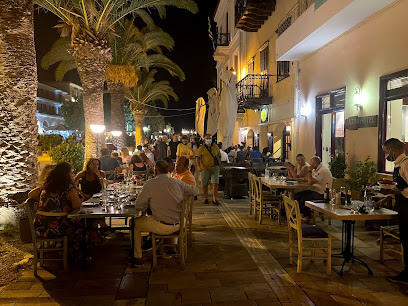
BOUNOS
Experience authentic Greek seafood at Bounos in Nafplio - where fresh ingredients meet traditional flavors in a charming coastal setting.
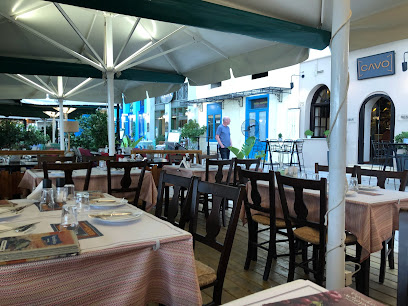
Markets, malls and hidden boutiques
Dimitrios Tsilimigras Diamond Boutique
Discover exquisite luxury watches and fine jewelry at Dimitrios Tsilimigras Diamond Boutique in Nafplio, Greece – a must-visit for discerning travelers.
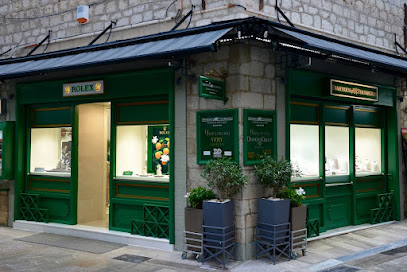
Σανδαλοποιείο Sandalworkshop
Explore the Sandalworkshop in Nafplion for exquisite handcrafted leather sandals embodying Greek craftsmanship and tradition.
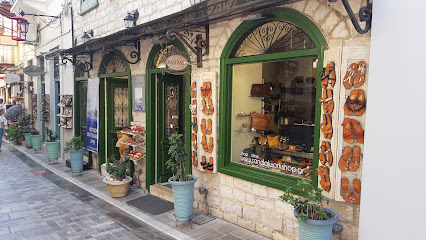
Bolero Shop
Explore Bolero Shop in Nafplion for exquisite lingerie that blends comfort and elegance, reflecting the charm of this historic Greek town.

Nafplia Bookstore
Discover Nafplia Bookstore, a literary gem in Nafplio, offering a vast collection of local and international books in a cozy atmosphere.
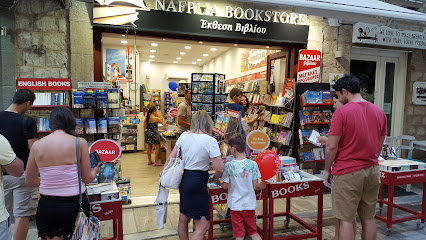
Kapnopoleio
Experience the rich tradition of tobacco culture at Kapnopoleio in Nafplio, where quality meets craftsmanship in a charming setting.
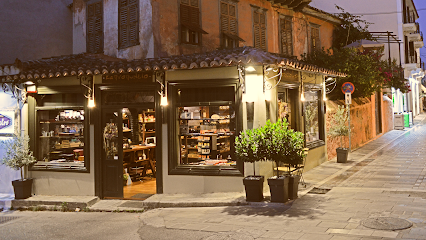
Armiriki
Explore Armiriki in Nafplio for unique T-shirts that embody Greek culture and creativity, perfect for every traveler’s wardrobe.
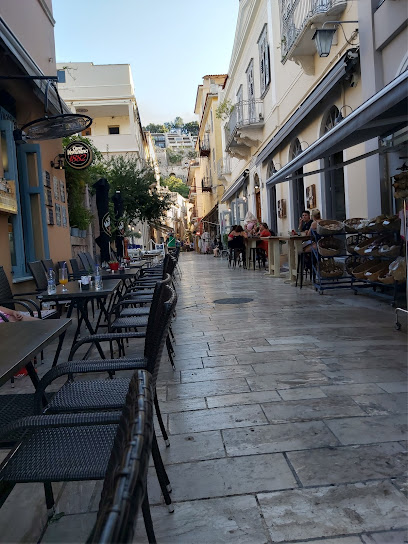
Achilleas Accessories - Ναύπλιο
Explore Achilleas Accessories in Nafplio for exquisite fashion items that capture the essence of Greek craftsmanship and style.
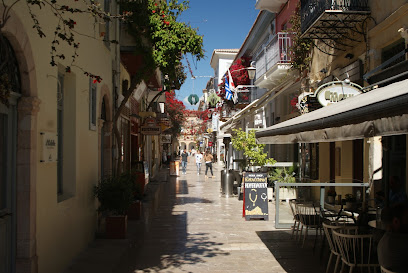
Sofia Manta
Explore Sofia Manta in Nafplio for exquisite footwear and stylish accessories that elevate your fashion game.

TASTE3
Discover the exquisite world of teas, chocolates, and liquors at TASTE3 in Nafplio—where taste meets tradition.

Feelwood Concept Store
Explore the Feelwood Concept Store in Nafplio for exquisite bags, watches, and optical products, blending craftsmanship with contemporary design.
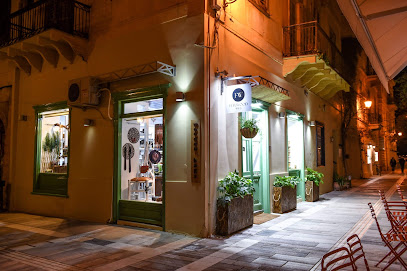
Maya Zoulovits Handmade Jewelry
Explore the exquisite craftsmanship of Maya Zoulovits Handmade Jewelry in Nafplio, where every piece tells a unique story of artistry and tradition.
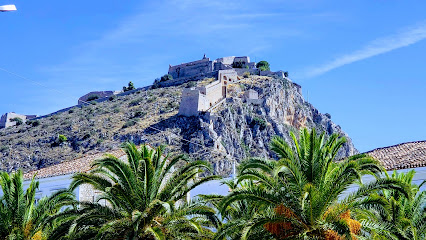
The Little Prince
Discover unique souvenirs and local crafts at The Little Prince gift shop, a charming stop in Nafplio that captures the spirit of Greece.
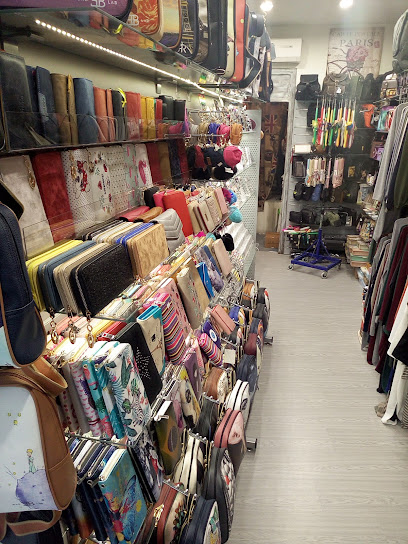
Aloha nafplio
Discover unique fashion finds at Aloha Nafplio, a charming boutique offering bags, dresses, and accessories in the heart of Nafplio.

Antiminsio- εκκλησιαστικά είδη ecclisiastical art
Discover the beauty of ecclesiastical art at Antiminsio, a charming church supply store in the heart of Nafplio, Greece.
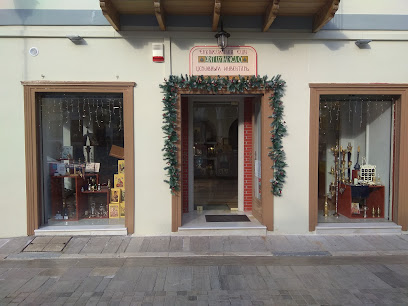
MENZIES Clothing Store
Uncover the latest fashion trends at MENZIES Clothing Store in Nafplion, where quality meets style in a beautiful shopping environment.

Essential bars & hidden hideouts
Allotino Coffee & Bar
Discover the essence of Nafplio at Allotino Coffee & Bar, where refreshing drinks and delightful ambiance meet.

3SIXTY Grill Dining | Wine Bar
Experience the exquisite flavors of Greece at 3SIXTY Grill Dining | Wine Bar in Nafplio - a must-visit culinary destination for food lovers.
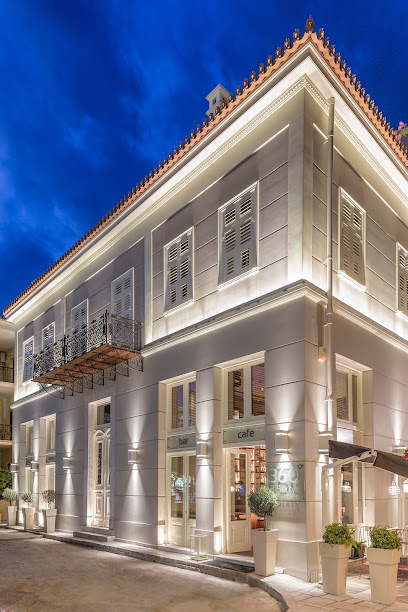
Teory
Discover the best of Greek cuisine at Teory, a charming bistro in Nafplio, known for its delicious breakfast and inviting atmosphere.

Black Cat
Experience the cozy charm of Black Cat Café in Nafplio, where delicious coffee meets inviting atmosphere in the heart of this historic town.
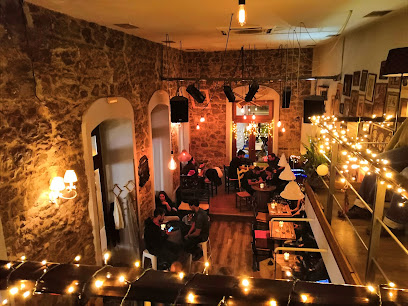
ROSSO music cafe | wine bar
Discover ROSSO Music Cafe in Nafplio: where exceptional coffee, live music, and a vibrant atmosphere create unforgettable moments.
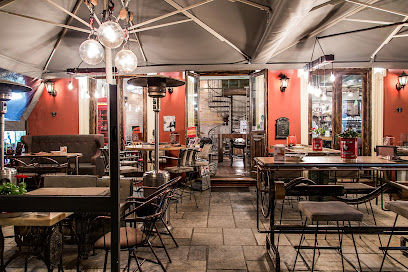
ΞENON Café · Bistro
Discover the flavors of Nafplio at ΞENON Café · Bistro, where Mediterranean cuisine meets a vibrant café atmosphere.

MENTΩR bar & grill
Savor the best grilled dishes in Nafplio at MENTΩR Bar & Grill, where local flavors meet modern culinary excellence.
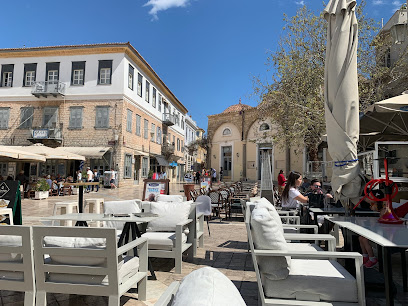
Mediterraneo wine & deli
Discover the essence of Mediterranean flavors at Mediterraneo Wine & Deli in Nafplio, where exquisite wines and gourmet delicacies await.
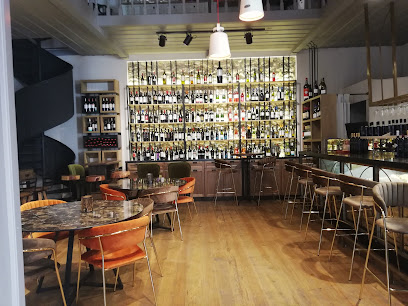
CuCuRuCu Nafplio
Experience the authentic flavors of Greece at CuCuRuCu in Nafplio, a grill restaurant renowned for its exquisite dishes and warm hospitality.

Cavo
Explore Cavo in Nafplio: a vibrant bar and restaurant offering a rich selection of wines and delicious Greek cuisine, perfect for every traveler.
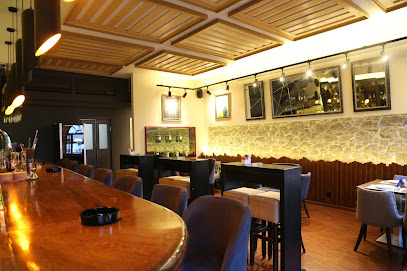
Jukebox espresso bar
Experience the vibrant atmosphere and exceptional coffee at Jukebox Espresso Bar in Nafplio, a must-visit for every coffee lover.
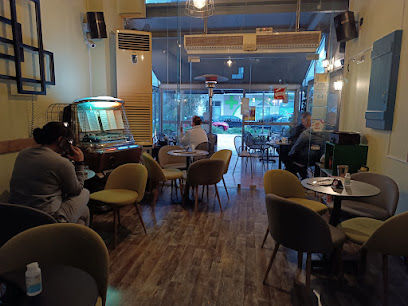
alkioni wine bar & cellar
Experience the exquisite flavors of Greece at Alkioni Wine Bar & Cellar, where local wines and culinary delights come together in a charming setting.
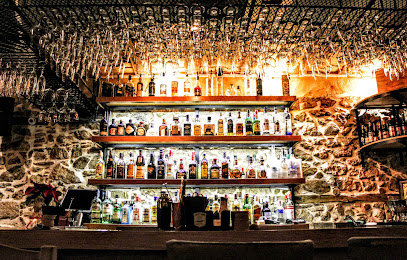
Black Cat 999
Discover Black Cat 999 in Nafplio, where local flavors meet modern gastropub style for an unforgettable dining experience.
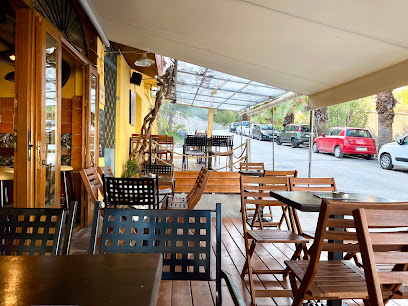
Petrino Bar Nafplio
Experience the vibrant nightlife of Nafplio at Petrino Bar, where every drink tells a story and every night is alive with energy.
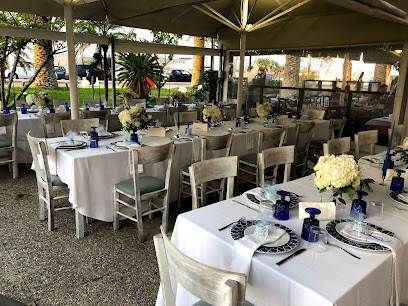
AG OLIVINE Tasting Bar And Shop
Experience the finest Greek olive oils and wines at AG OLIVINE Tasting Bar And Shop in Nafplio, where every taste tells a story.
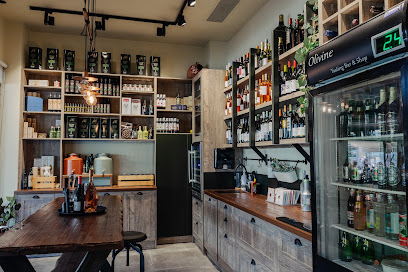
Travel experiences inspired by this city
Explore more travel diariesLocal Phrases
-
- HelloΓεια σας
[Yia sas] - GoodbyeΑντίο
[Adio] - YesΝαι
[Ne] - NoΌχι
[Ohi] - Please/You're welcomeΠαρακαλώ
[Parakalo] - Thank youΕυχαριστώ
[Efharisto] - Excuse me/SorryΣυγνώμη
[Signomi] - How are you?Τι κάνετε;
[Ti kanete?] - Fine. And you?Καλά. Εσείς;
[Kala. Esis?] - Do you speak English?Μιλάτε Αγγλικά;
[Milate Agglika?] - I don't understandΔεν καταλαβαίνω
[Den katalaveno]
- HelloΓεια σας
-
- I'd like to see the menu, pleaseΘα ήθελα να δω το μενού, παρακαλώ
[Tha ithela na do to menou, parakalo] - I don't eat meatΔεν τρώω κρέας
[Den troo kreas] - Cheers!Στην υγειά σας!
[Stin igia sas] - I would like to pay, pleaseΘα ήθελα να πληρώσω, παρακαλώ
[Tha ithela na plirosou, parakalo]
- I'd like to see the menu, pleaseΘα ήθελα να δω το μενού, παρακαλώ
-
- Help!Βοήθεια!
[Voithia!] - Go away!Φύγε!
[Fige!] - Call the Police!Καλέστε την Αστυνομία!
[Kaleste tin Astinomia!] - Call a doctor!Καλέστε έναν γιατρό!
[Kaleste enan yatro!] - I'm lostΈχω χαθεί
[Eho hathi] - I'm illΕίμαι άρρωστος
[Eimai arrostos]
- Help!Βοήθεια!
-
- I'd like to buy...Θα ήθελα να αγοράσω...
[Tha ithela na agoraso...] - I'm just lookingΑπλά κοιτάω
[Apla kito] - How much is it?Πόσο κοστίζει;
[Poso kostizi?] - That's too expensiveΑυτό είναι πολύ ακριβό
[Afto ine poli akribo] - Can you lower the price?Μπορείτε να μειώσετε την τιμή;
[Borite na miosete tin timi?]
- I'd like to buy...Θα ήθελα να αγοράσω...
-
- What time is it?Τι ώρα είναι;
[Ti ora ine?] - It's one o'clockΕίναι μία η ώρα
[Ine mia i ora] - Half past (10)Μισή (10)
[Misi (10)] - MorningΠρωί
[Proi] - AfternoonΑπόγευμα
[Apoyema] - EveningΒράδυ
[Vradi] - YesterdayΧθες
[Hthes] - TodayΣήμερα
[Simera] - TomorrowΑύριο
[Aurio] - 1Ένα
[Ena] - 2Δύο
[Dio] - 3Τρία
[Tria] - 4Τέσσερα
[Tessera] - 5Πέντε
[Pente] - 6Έξι
[Exi] - 7Εφτά
[Efta] - 8Οχτώ
[Ohto] - 9Εννιά
[Enia] - 10Δέκα
[Deka]
- What time is it?Τι ώρα είναι;
-
- Where's a/the...?Πού είναι ένας/η...
[Pou ine enas/i...] - What's the address?Ποια είναι η διεύθυνση;
[Pia ine i diefthinsi?] - Can you show me (on the map)?Μπορείτε να μου δείξετε (στο χάρτη);
[Borite na mou dixete (sto charti)?] - When's the next (bus)?Πότε είναι το επόμενο (λεωφορείο);
[Pote ine to epomeno (leoforeio)?] - A ticket (to ....)Ένα εισιτήριο (προς ....)
[Ena isitirio (pros ....)]
- Where's a/the...?Πού είναι ένας/η...
History of Nafplio
-
Nafplio, believed to be named after Nauplius, a son of Poseidon, has roots tracing back to the ancient Greek era. The city was an important maritime power in Mycenaean times and later became a key player in the Byzantine Empire.
-
In the 13th century, Nafplio came under the control of the Franks following the Fourth Crusade. The city became a significant stronghold, with the construction of fortifications such as the Acronafplia fortress, which still stands today as a testament to this era.
-
Nafplio was ruled by the Venetians from the late 14th century until the early 16th century. During this period, the Venetians fortified the city extensively, constructing the Palamidi fortress and the Bourtzi castle, which are now iconic landmarks.
-
In 1540, Nafplio fell to the Ottomans and remained under their control until the early 19th century, except for a brief return to Venetian rule in the late 17th century. The Ottoman influence is evident in the city's architecture and cultural heritage.
-
Nafplio played a crucial role in the Greek War of Independence against Ottoman rule. The city was liberated in 1822 and subsequently became the first capital of the newly independent Greek state in 1829. This period saw significant political and social changes that shaped modern Greece.
-
In the 19th and 20th centuries, Nafplio evolved into a cultural and historical hub, attracting visitors with its rich heritage and stunning architecture. The city's preserved medieval and neoclassical buildings, along with its vibrant cultural scene, make it a unique destination.
Nafplio Essentials
-
Nafplio is located in the Peloponnese region of Greece. The nearest major airport is Athens International Airport (Eleftherios Venizelos), approximately 140 kilometers away. From Athens, you can take a bus from Kifissos Bus Terminal directly to Nafplio, which takes around 2 to 2.5 hours. Alternatively, you can rent a car and drive, which offers a scenic route via the Corinth Canal. Taxis and private transfers are also available for a more convenient but costly option.
-
Nafplio is a compact town, and many attractions are within walking distance. For longer trips, local taxis are available and reasonably priced. There is also a local bus service that connects various parts of the town and surrounding areas. Renting a bike or car can offer more flexibility for exploring nearby sites such as Epidaurus and Mycenae.
-
The official currency in Greece is the Euro (EUR). Credit cards are widely accepted in hotels, restaurants, and shops, but it's a good idea to carry some cash for smaller establishments and markets. ATMs are plentiful in Nafplio, so withdrawing cash is convenient. Be aware that smaller businesses may prefer cash payments.
-
Nafplio is generally a safe destination for tourists. However, it is always wise to take standard precautions. Avoid poorly lit areas at night and be cautious of your belongings in crowded places. Although there are no specific high-crime areas targeting tourists, staying vigilant and aware of your surroundings is advisable.
-
In case of an emergency, dial 112, the European emergency number. The local hospital in Nafplio provides medical services, and there are several pharmacies in town for minor health issues. It's recommended to have travel insurance that covers medical emergencies. The police station is centrally located, and officers can assist with any issues.
-
Fashion: Do dress modestly, particularly when visiting religious sites. Avoid overly revealing clothing. Religion: Do respect local customs and traditions. When entering churches, cover your shoulders and knees. Public Transport: Do be respectful and give up your seat to elderly passengers. Don’t eat or drink on public transport. Greetings: Do greet locals with a friendly 'Kalimera' (good morning) or 'Kalispera' (good evening). A handshake is common. Eating & Drinking: Do try local delicacies and accept food offerings graciously. Don’t refuse hospitality, as it is considered impolite.
-
To experience Nafplio like a local, visit the central market where you can buy fresh produce and traditional Greek goods. Engage with locals, as they are often friendly and willing to share stories about the town’s history. Don’t miss visiting the Palamidi Fortress for stunning views of the town and the sea, and take a leisurely stroll along the waterfront promenade. For a unique experience, try to visit during local festivals and events, which offer a glimpse into the rich cultural heritage of the area.
Trending Landmark in Nafplio
-
Fortress of Palamidi
-
Syntagma Square - Nafplio
-
Archaeological Museum of Nafplio
-
Fortress of Akronauplía
-
Church of Saint Spyridon
-
Lion of the Bavarians
-
The Bourtzi Fortress
-
Five Brothers
-
National Gallery - Nafplio Department
-
Kolokotronis Park
-
Nafplio Lighthouse
-
Komboloi Museum
-
Vouleftiko - First Parliament of Greece
-
Archaeological Site of Asine
-
Akronafplia's Castle
Nearby Cities to Nafplio
-
Things To Do in Kalamata
-
Things To Do in Athens
-
Things To Do in Olympia
-
Things To Do in Delphi
-
Things To Do in Patras
-
Things To Do in Lamia
-
Things To Do in Zakynthos
-
Things To Do in Volos
-
Things To Do in Mykonos
-
Things To Do in Larissa
-
Things To Do in Chania
-
Things To Do in Meteora
-
Things To Do in Pyrgos
-
Things To Do in Santorini
-
Things To Do in Rethymno


















